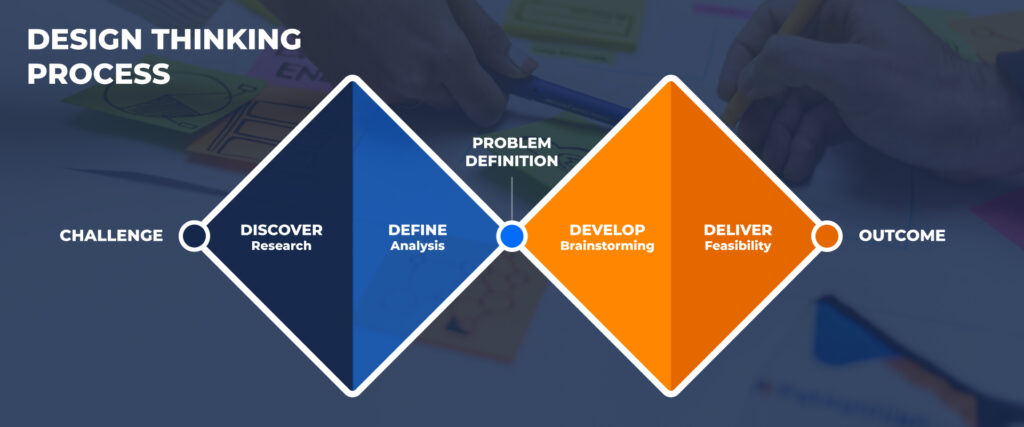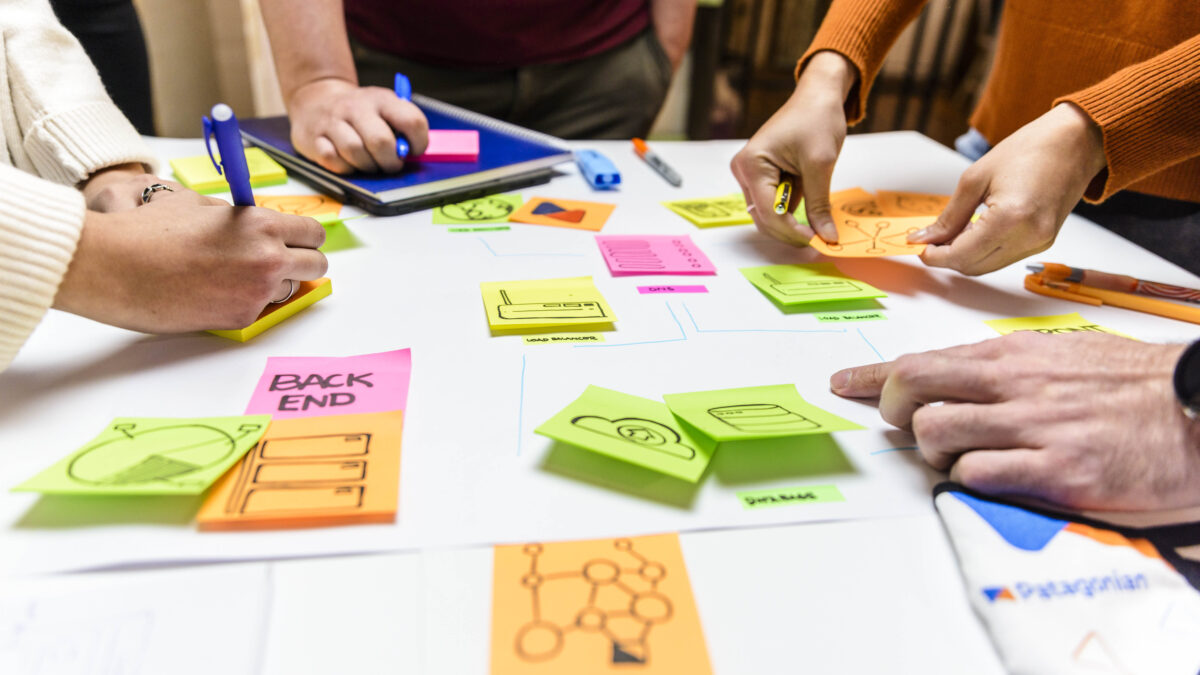Legend says that before the dawn of Product Discovery, all projects were born in the dark. No clear direction, no goals defined, and every so often, they were plagued with tons of unnecessary scope that hindered the smooth execution of the development process.
But what is Product Discovery, and how did it land in our portfolio? To answer that question and get to the nitty-gritty of what makes this process a must for any project, we will hear the word of one of our experts. We invite you to read a quick recap of an exciting chat with Juan Martín Torrecilla, Patagonian’s Delivery Manager and leader of the company’s Design team.
How would you define Product Discovery in your own words?
In a nutshell, it is a process in which, through different workshops, games, and activities, you compile information about an idea or business proposal. The goal is to design a solution that covers all the requirements and needs of our clients and their final users.
Defining a product strategy can be tricky. Without a clear understanding from the beginning, you’ll find yourself dealing with unpleasant situations and unwanted scenarios. A Product Discovery is a warranty your project will kick off on the right foot. It helps you create an accurate MVP, reducing risks and costs from the very start. I can confidently say it’s a solid foundation to build any solution.
How was the inception process of Product Discovery in Patagonian?
It kicked off over three years ago as an internal process. Back then, we saw the need to rebrand the company from Patagonian Tech to Patagonian, so we launched a workshop led by a UX specialist and a Product Manager. The team was already experienced in Service Design, Design Thinking, and other design methodologies, so this was an excellent opportunity to create something repurposing our knowledge.
We tried out different tools and activities to create the new brand identity, the personality, and the user personas, and this experience helped us consolidate the process.
Once we understood the tremendous value it could add to our clients, we explored the possibility of offering it externally. After these past few years, we’ve become highly acquainted with the different techniques, how to execute them tailored to each situation and need, and how to be an effective facilitator without influencing the results.
When is a Product Discovery needed?
At the risk of sounding too much like a Salesman, I believe it is always necessary. The benefits you get from it are palpable and impossible to ignore.
It helps you cut down the clutter that otherwise would be lost time and resources. Sometimes projects are built on a vision following desires instead of actual needs, but a Discovery can point you in the right direction, the one that adds and delivers true value. It’s also helpful to estimate development efforts and team composition, which are usually bound to change along with requirements when project goals are unclear from the start.
It’s important to mention that Product Discoveries are not meant only for new products. Many companies request them to analyze functional solutions already in the market or when they need to add new functionalities. The objective is often to discard functionalities with no value or that nobody uses, rework them because they were poorly planned, or explore new features and work on their development strategy.
Even when Discoveries are more popular at the beginning of a project, in an ideal scenario, you should implement them over time to ensure the real value of a solution.
What’s the typical team composition of a Product Discovery?
We usually work with a UX designer, a UI designer, a Product Owner or Product Designer, and an Architect. Each one of them has a specific role and responsibility.
The User Experience Designer is the member with the most active role throughout the process. They act as facilitators, designing experiences and guiding the interviews with the users, potential users, and stakeholders. They also prepare usability tests and are responsible for implementing the Design Thinking Methodology.
We work with the Design Thinking methodology because it explores the best design solutions for the project by placing the end user at the center of the creative process.
In our adaptation, each step aims to determine the problem, explore possible solutions, and implement the most satisfying for the project.

The User Interface Designer supports the UX designer throughout the Product Discovery process. They’re in charge of suggesting ideas about the brand and color palette. They create the design system and the high-definition prototypes to generate a visual impact in the final parts of the activity.
The Product Owner takes care of the business side. While the UX designer focuses on the user, the Product Owner‘s attention is directed toward the stakeholders. Their responsibilities are related to questions like how to monetize an application, a webpage, or the piece we’re working on and strategies to reduce costs and maximize the ROI.
Finally, the Architect is the person that guarantees the technical feasibility of the project. They are the technical referent and passively support the process, ensuring it’s doable. They design strategies to execute the project and help choose the best technologies to apply, defining the infrastructure for a seamless performance while also saving costs. They also help the Product Owner or Product Designer generate the product roadmap and the technical estimations to create a commercial proposal.
What’s the secret sauce in achieving a successful Discovery?
Definitely, the facilitators’ active listening. Sometimes people are unaware of how much their opinion or attitudes can influence decision-making or the result of the activities. Taking a step aside and being able to become objective without intervening is one of the most complex challenges you will find in the process.
The double-diamond methodology helps you generate questions and understand the problem. We usually manage two different approaches tailored to the client’s request. On one side, we have the full Product Discovery. It usually takes up to four weeks, from exploring the case to finding the problem, researching possible solutions, and generating design systems and prototypes. Instead, if the client has already identified their main issue to solve, we jump straight to the problem-solving and prototyping-design stage.
If we’ve learned something after these years of practice, avoiding falling in love with a solution is crucial when looking for the best fit to solve the problem. You won’t always love the solution, but you must trust the Product Discovery process. We have explored what a product discovery is, why and when it’s essential to implement one, the central roles in the process, and the secret sauce that makes them a success. If you would like to read more about this topic, we invite you to take a look here. And if you’re wondering how to implement it in your business, drop us a line. We would be more than glad to help you in that adventure.

